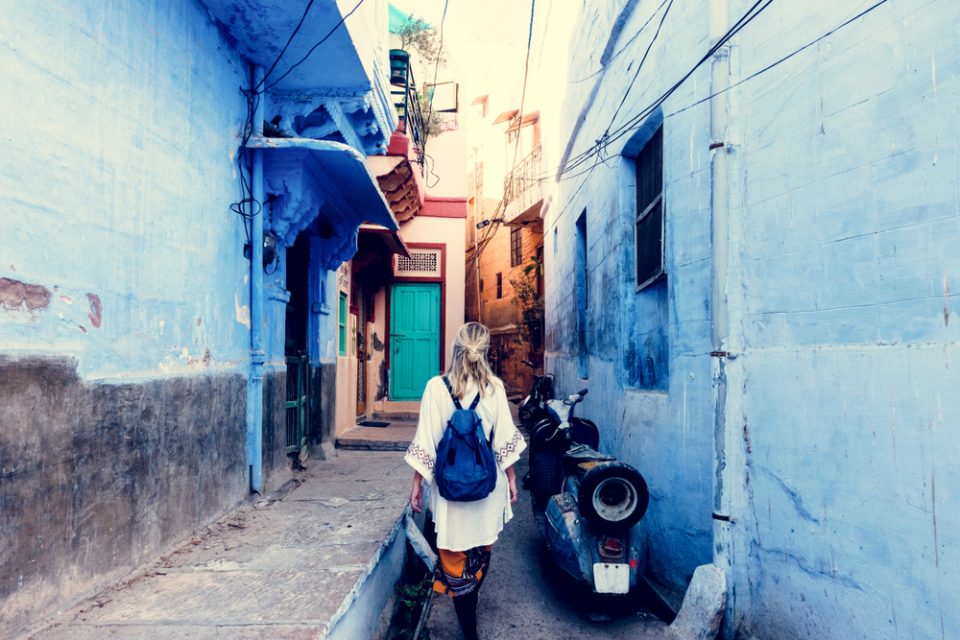
For many travelers, a solo trip isn’t about checking the box on a travel trend. For leisure travelers, it can be a preference—solo travel grants a freedom to explore and the ability to give your undivided attention to self-reflection. For a business traveler, a solo trip might be a necessity or, for a freelancer, a matter of circumstance. Regardless of your reason to travel solo, an extra layer of caution is needed to stay safe; one that you might not think about when you’re otherwise accompanied by family, friends, or coworkers. Here are 10 tips for staying safe as a solo traveler.
Know your destination
As you plan an itinerary, you should research the safety of your destination. How, exactly? Start by checking for any travel advisories. The U.S. Department of State maintains a list of safety levels by country. Many governments around the world also do the same in order to keep their globetrotting citizens safe.
While travel advisories offer a safety check at the macro level, TripIt’s Neighborhood Safety Scores feature looks at the micro level, helping travelers know the safety of the neighborhood(s) they’re traveling to. Neighborhood safety scores—which cover a variety of categories like women’s safety, LGBTQ safety, theft, political freedoms, and more—are available in the TripIt app for all lodging, restaurants and activities that have an address.
“When it was first announced, I tried out the new Safety Scores feature because I had booked an activity in a city and I was curious about the neighborhood. Seeing the high crime rating for the neighborhood was a good reminder to be vigilant.” - Susan H.
Share your solo travel plans via TripIt
You’re not the only one who needs to be in-the-know before you go. Ahead of leaving for your solo trip, set up your Inner Circle in TripIt Pro. The Inner Circle feature allows you to share your travel plans with anyone you’d like, be it your spouse, partner, roommate, or work bestie. You can add to or edit your Inner Circle at anytime, including while you’re on the go, right in the Pro hub.
“The ability to share detailed travel info with my husband—who also travels a great deal for work—is immensely helpful. If plans change, we don't have to remember to let each other know, because the app takes care of it.” - Susan A.
Take a ride share instead of a cab
For the solo traveler, taking ride shares versus conventional cabs offers a variety of safety-related benefits: (1) your location is tracked, a feature that’s especially beneficial when riding at night, (2) some programs, like Uber, offer you the ability to share your location with someone you trust right in the app, (3) the price of your ride is fixed (no haggling), and (4) there’s no need for any exchange of paper currency. All factors that mitigate the potential for theft, or worse.
Also, be sure to always check the license plate of the car picking you up before entering the vehicle. Many cars look the same; this extra step will help keep you safe.
Book a walking tour
When I’m traveling solo, my day one objective is taking a walking tour. Not only are many tours offered for free, they’re a great way to familiarize myself with the lay of the land. That way, when I head out later to explore on my own, I’ll recognize landmarks more easily, stay better oriented to my surroundings, and most importantly, know the path back to my hotel.
Dress according to the local customs
It’s an easy way to not stand out. This especially applies to women, whose manner of dress is more prone to be impacted by local or religious customs—and frankly, more likely to draw attention when traveling alone.
Ask for a second floor room or above
The further foot traffic can be from your window, the better. And remember to always deadbolt the door before going to bed at night.
Don’t share your location on social media
In the age of social media, geotagging your travel photos is normal practice. However, as a precaution, I never ‘check-in’ at my current hotel or any specific location, for that matter. This ensures that anyone who could view my social media won’t be able to locate me, at least not until long after I’ve moved on or returned home.
Split your money up
Carrying the local currency helps make some transactions—like making purchases at a farmers market—or tipping easier. The caveat? Don’t keep all of your cash on you when you’re out and about. Should the worst case scenario happen, you don’t want to be pick-pocketed of all your paper currency.
Know who to contact in an emergency
TripIt Pro makes international solo travel easier by showing embassy information for 180 countries right in the International Travel Tools feature. Next time you travel internationally with TripIt, tap the passport button on your trip summary. There, you’ll find an array of tips and tools customized specifically to the country you are traveling to—including the address and phone number for the local embassy.
“The sense of calm I have knowing all of my travel details are easily accessible in the TripIt app, along with local information, makes turning up in a new city that little bit more relaxing, without removing the sense of adventure.” - Brian N.
Pay for your safety
Choose a ride share over public transportation, especially late at night. Book the pricier, centrally-located hotel over the budget hotel that's off the beaten path. Even if it means spending a bit more than you’d planned, there’s no price on protecting your safety.

